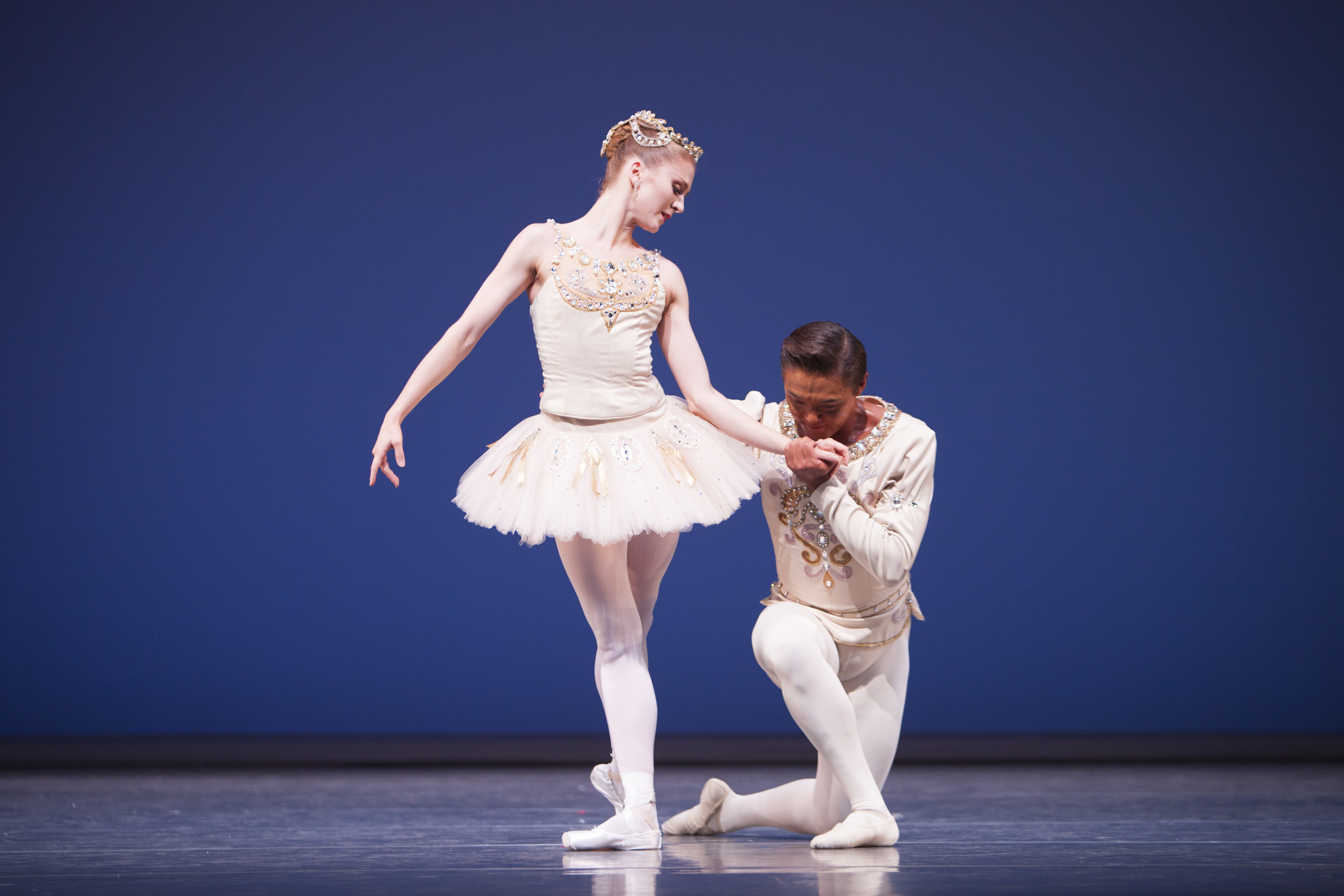Opening Nights
PJewels
McCaw Hall, 321 Mercer St. (Seattle Center), 441-2424, pnb.org. $28–$179. Runs Thurs.–Sat. plus Sun., Oct. 5. Ends Oct. 5.
The last time Pacific Northwest Ballet danced all of George Balanchine’s neoclassical masterwork, in 2009, Lesley Rausch didn’t appear at all—she was recuperating from an injury and had to watch her colleagues perform the roles she’d rehearsed. This year she finally makes her debut in the central role in Diamonds, one of the three ballets that make up Jewels.
One of the pleasures of a revival is using it as a benchmark—to see how favorite artists have developed and to compare new performances to past experiences. PNB’s history with Jewels dates to 1988, while Rausch joined the company in 2001. Now we see the progress she’s made. Her performance exemplifies her best attributes—modesty, articulation, and clarity. She and the choreography serve each other well.
Carrie Imler and Carla Korbes are both returning to the lead role in Diamonds, and both have deepened their interpretation of the part. Imler’s innate technical security allows her to take risks that would topple other dancers, and she throws herself into the role, lifting her focus to the ceiling in a series of arabesque turns that add a note of wildness to the otherwise regal choreography. Korbes’ approach also feels very personal; within Balanchine’s framework, she conveys a detailed emotional arc that matches the expressive Tchaikovsky score. The same thoughtful attention is evident in Emeralds, where the delicate Faure score is matched by her filigree gestures. She seems to carry on a flirtation with her hands as they twist and flex.
Rubies links a jazzy, kinetic style to Stravinsky’s Capriccio, with a central duet where both Leta Biasucci and Angelica Generosa make auspicious debuts. Biasucci, a relative newcomer to PNB, has been leaping from strength to strength, and her pairing with Jonathan Porretta feels freshly coached and vividly danced. Generosa cultivates a sassy and flirtatious relationship with partner James Moore. Both women show a depth of rhythmic understanding in the piece.
In the past, if you wanted to track the development of a dancer, you’d generally use the long-form classics (Swan Lake, Sleeping Beauty, etc.) as performance standards. Early in the 21st century, we’ve now added Jewels to that collection of landmarks. Sandra Kurtz
Slip/Shot
Seattle Public Theater at the Bathhouse, 7312 W. Green Lake Ave. N., 524-1300, seattlepublictheater.org. $15–$32. Runs Thurs.–Sat. Ends Oct. 12.
Seattle Public Theater’s production of Slip/Shot is a sad example of a show that ought to rip your heart out, but the anticipated chemistry among audience, performers, and current events somehow fails to ignite. At a time when the killings of Trayvon Martin and Michael Brown are central to America’s national conversation about race, Jacqueline Goldfinger’s 2010 drama, though set in 1962, is perfectly poised to be painfully topical. What’s it about? A white cop shooting a black kid.
Goldfinger’s tale rests partly on our memory of the early martyrs of the Civil Rights movement (including Emmett Till and Medgar Evers). Yet the problem with Slip/Shot is that it holds itself at arm’s length from the very tragedy it intends to depict—the accidental killing of a young black man (Treavor Boykin) by the repentant policeman (Quinn Armstrong) who’s the son of a racist. After that grievous mistake, damage is done to families and friends on both sides, yet the cast mostly simmers when what’s needed is a rolling boil.
It’s impossible to know if such depth of emotion is beyond them, but what’s certain is that director Kelly Kitchens chills the incendiary emotions of Goldfinger’s script with the Seattle Freeze. Just as locals happily assemble to protest today’s intolerable cause du jour, then shrink from an actual argument, this production tells us that racism is tragic—rather than actually showing the profound pain such injustice wreaks.
In terms of the tech work, a very serviceable and minimalist set design by Craig Wollam cleverly addresses scene changes and makes this 90-minute drama zip by. But this show’s success rises and falls on its provocative story and characters—and somehow SPT has confused Arctic blast for the blast furnace. Kevin Phinney
E
stage@seattleweekly.com




